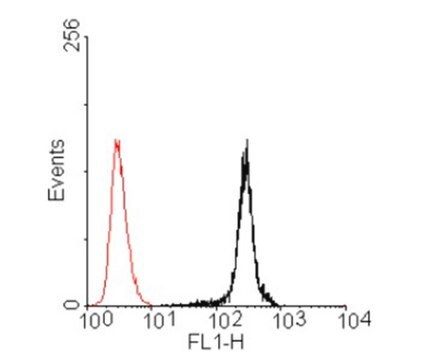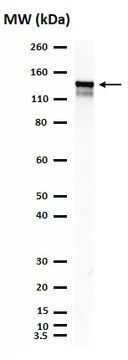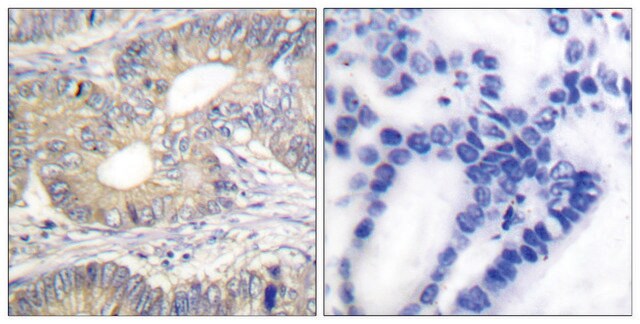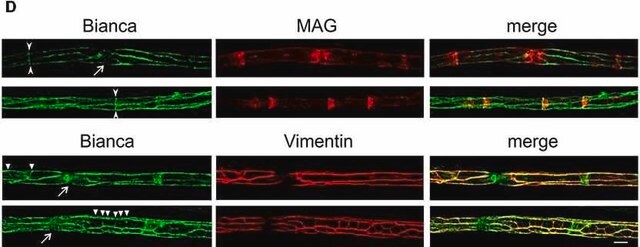MAB1049
Anti-Bone Morphogenetic Protein 4 Antibody, clone 3H2
clone 3H2, Chemicon®, from mouse
Synonym(e):
BMP-4, DVR-4
About This Item
Empfohlene Produkte
Biologische Quelle
mouse
Qualitätsniveau
Antikörperform
purified immunoglobulin
Antikörper-Produkttyp
primary antibodies
Klon
3H2, monoclonal
Speziesreaktivität
rat, human, mouse
Hersteller/Markenname
Chemicon®
Methode(n)
ELISA: suitable
immunocytochemistry: suitable
western blot: suitable
Aufnahme
sample type neural stem cell(s)
sample type mesenchymal stem cell(s)
Isotyp
IgG2b
NCBI-Hinterlegungsnummer
UniProt-Hinterlegungsnummer
Versandbedingung
wet ice
Posttranslationale Modifikation Target
unmodified
Angaben zum Gen
human ... BMP4(652)
mouse ... Bmp4(12159)
rat ... Bmp4(25296)
Allgemeine Beschreibung
Spezifität
Human BMP-4 (accession number P12644) precursor (389 aa, glycosilated) consists of a propeptide (273 aa) and active BMP-4 (116 aa, glycoslyated; MW reduced 17-20 kDa).
Immunogen
Anwendung
Stammzellforschung
Mesenchymale Stammzellen
Western blot using osteoinductive cells; i.e., BFP and Saos-2
Optimal working dilutions must be determined by the end user.
Zielbeschreibung
Physikalische Form
Lagerung und Haltbarkeit
Hinweis zur Analyse
Mouse brain extract
Sonstige Hinweise
Rechtliche Hinweise
Haftungsausschluss
Sie haben nicht das passende Produkt gefunden?
Probieren Sie unser Produkt-Auswahlhilfe. aus.
Lagerklassenschlüssel
10 - Combustible liquids
WGK
WGK 2
Flammpunkt (°F)
Not applicable
Flammpunkt (°C)
Not applicable
Analysenzertifikate (COA)
Suchen Sie nach Analysenzertifikate (COA), indem Sie die Lot-/Chargennummer des Produkts eingeben. Lot- und Chargennummern sind auf dem Produktetikett hinter den Wörtern ‘Lot’ oder ‘Batch’ (Lot oder Charge) zu finden.
Besitzen Sie dieses Produkt bereits?
In der Dokumentenbibliothek finden Sie die Dokumentation zu den Produkten, die Sie kürzlich erworben haben.
Unser Team von Wissenschaftlern verfügt über Erfahrung in allen Forschungsbereichen einschließlich Life Science, Materialwissenschaften, chemischer Synthese, Chromatographie, Analytik und vielen mehr..
Setzen Sie sich mit dem technischen Dienst in Verbindung.






